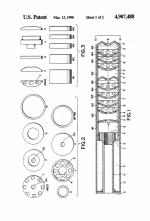My comment is too late for the OP, but for others you really do need to consider other factors beyond the dB numbers.
Besides considering the weight and length of the can, if you shoot regularly (or a lot) you probably will want to clean the thing. Consider how you will do that.
Pro tip: If it’s a non-user serviceable can, weigh it when you get it. Weigh it later to understand how filled up it is inside.
What I’m driving at is to strongly consider an all-titanium can. They can withstand CLR better than other materials (avoid the SS threads, though). CLR will etch most other metals and really mess up aluminum.
Or buy a can through a manufacturer that will clean them for you. TBAC comes to mind (I’m not a fanboy, but they make good stuff), and I heard Surefire recored Garand Thumbs RC2 as it was stuffed full of carbon. Not sure if they charged him or if they will help mortals out.
Just the fact that TBAC will clean my can once a year for free for life makes me lean that way. I have some take-apart cans and cleaning them sucks

I’m not someone that is anal and needs a spotless suppressor. But after many nay-sayers said center-fire suppressors don’t need cleaning, manufacturers have come around. Check this thread out:
I sent an Ultra 7 to TBAC to remove the insert to go from direct thread to CB mount. When I weighed the box I thought to myself "that's pretty heavy". I got a call from them the day they received it and they said it should be cleaned asit was nearly 4 oz. heavy. I've never cleaned it and...

www.snipershide.com
Chunks of carbon falling in a bullet’s path or down your barrel is not good. And yes, this is after higher round counts and sometimes with particularly dirty reloading powder.
These objects cost way more than they should and are way too hard to obtain. My view is that they are not disposable.
Side note: Some manufacturers actually made sealed rimfire cans and said NBD. Not any longer!



